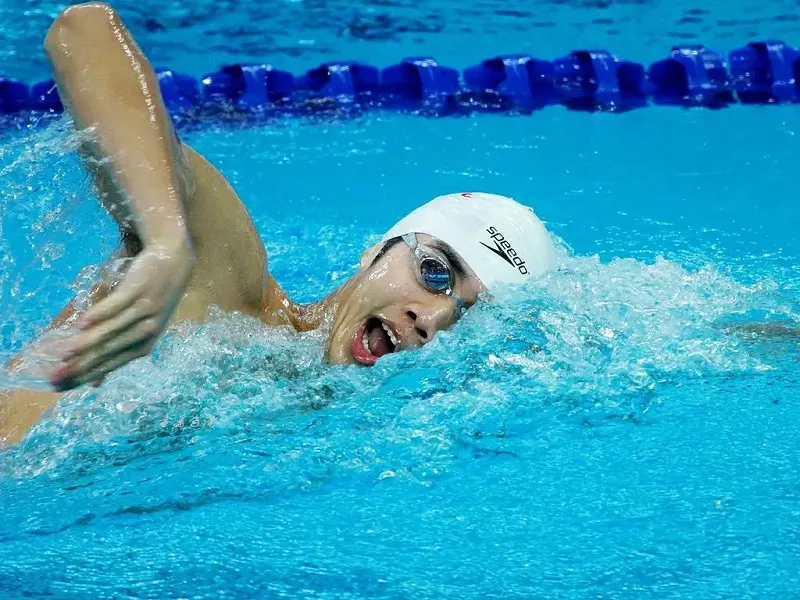Swimming is a popular form of exercise that offers numerous benefits for overall fitness and cardiovascular health. While it mainly targets the muscles of the upper and lower body, many people wonder if swimming is effective for training abdominal muscles. In this article, we will explore the impact of swimming on abdominal muscles and discuss its suitability as a means of abdominal training.
Understanding the Abdominal Muscles
Before delving into the effectiveness of swimming for abdominal muscle training, it’s important to understand the anatomy of the abdominal muscles. The abdominal region consists of several muscle groups, including the rectus abdominis, transverse abdominis, external obliques, and internal obliques. These muscles play a vital role in stabilizing the core, supporting proper posture, and facilitating movements such as rotation and flexion of the torso.
The Role of Swimming in Abdominal Muscle Engagement
Swimming is known for its ability to provide a total body workout, engaging both the upper and lower body muscles. However, when it comes to specifically targeting the abdominal muscles, swimming may not be as effective as other forms of exercise that directly focus on the core.
While swimming involves continuous movements of the arms and legs, the core muscles are primarily engaged in maintaining stability and balance in the water. The act of stabilizing the body and maintaining buoyancy requires activation of the abdominal muscles to some extent. However, the intensity of their engagement might not be as high as exercises that specifically isolate and target the abdominal muscles.
Nevertheless, certain swimming strokes can have a greater impact on the core muscles compared to others. Strokes like butterfly and freestyle utilize a significant amount of rotational movement, which can engage the oblique muscles to a certain degree. Additionally, the dolphin kick used in the butterfly stroke engages the deep core muscles, including the transverse abdominis.
Benefits of Swimming for Abdominal Conditioning
While swimming may not be the most effective way to isolate and strengthen the abdominal muscles, it does offer several benefits for overall abdominal conditioning and core strength. Here are some key advantages of swimming in relation to the abdominal muscles:
Core Stabilization:
Swimming requires maintaining a stable and streamlined body position in the water, which inherently engages the core muscles. Regular swimming can improve core stability and contribute to better posture.
Endurance and Toning:
Swimming is an excellent cardiovascular workout that helps burn calories and reduce body fat. As excess fat is shed, the underlying abdominal muscles become more visible and toned.
Balanced Muscle Development:
Swimming involves a balanced recruitment of various muscle groups, including the arms, legs, back, and chest. This overall muscle development contributes to improved body symmetry and can indirectly enhance the appearance of the abdominal area.
Low-Impact Exercise:
Unlike many land-based exercises, swimming is a low-impact activity that puts minimal stress on the joints. This makes it an ideal option for individuals with joint pain or injuries who still seek to engage in abdominal conditioning.
Improved Flexibility:
The movements involved in swimming promote flexibility throughout the entire body, including the trunk and core muscles. Enhanced flexibility can help prevent injuries and allow for a wider range of motion during other exercises that target the abdominal muscles directly.
Supplementary Abdominal Exercises for Swimmers
While swimming provides a host of benefits for abdominal conditioning, incorporating additional exercises specifically targeting the abdominal muscles can further enhance the effectiveness of your training regimen. Here are a few supplementary exercises that swimmers can incorporate:
Planks:
Planks are one of the most effective exercises for strengthening the core muscles, including the abdominals. Variations such as side planks and plank twists can provide additional challenges.
Russian Twists:
This exercise targets the oblique muscles and can be performed using a medicine ball or bodyweight. It involves rotating the torso from side to side while in a seated position with feet elevated.
Bicycle Crunches:
Lie on your back and mimic a cycling motion while simultaneously bringing opposite elbow and knee together. This exercise effectively engages the entire abdominal region, including the rectus abdominis and obliques.
Leg Raises:
Hanging leg raises or lying leg raises are great exercises for targeting the lower abdominal muscles. These exercises involve lifting the legs while keeping them straight, either from a hanging bar or while lying on the floor.
Stability Ball Exercises:
Utilizing a stability ball during exercises like crunches or planks adds an element of instability, requiring more engagement from the core muscles to maintain balance.
Conclusion
While swimming may not be the most effective method for isolating and strengthening the abdominal muscles, it offers numerous benefits for overall abdominal conditioning and core strength. Regular swimming can improve core stability, enhance endurance and toning, promote balanced muscle development, provide low-impact exercise, and improve flexibility. To maximize the effectiveness of abdominal training, swimmers can incorporate supplementary exercises that specifically target the abdominal muscles. By combining swimming with targeted abdominal
Related topics:


